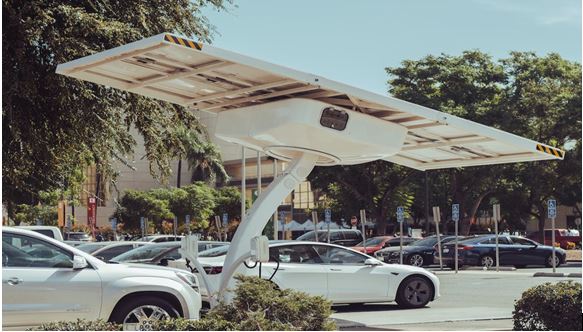The adoption of electric vehicles (EVs) is on the rise, necessitating the installation of efficient and accessible charging infrastructure. This article explores the world of EV charger installation, providing a comprehensive understanding of different charging options and factors to consider before installation. The informative and technical approach focuses on outlining the installation process while addressing common challenges that may arise along with potential solutions. By navigating this complex landscape, stakeholders can maximize EV adoption by ensuring optimal charging experiences for users.
Table of Contents
Understanding Electric Vehicle Charging Options
Electric vehicle charging options encompass a range of technologies and infrastructure that can be utilized to accommodate the growing demand for electric vehicles. Electric vehicle charging infrastructure refers to the network of chargers, both residential and public, that provide power to electric vehicles. These chargers come in various forms, including Level 1 (110-volt) chargers, which are slower but can be used with standard household outlets, and Level 2 (240-volt) chargers, which offer faster charging times. Additionally, there are also DC fast chargers that provide even quicker charging.
The benefits of electric vehicle charging include reduced greenhouse gas emissions compared to traditional gasoline-powered cars and lower fuel costs for drivers. Installing a robust electric vehicle charging infrastructure is essential for maximizing EV adoption and ensuring convenient access to charging options for all-electric vehicle owners.
Types of EV Chargers
Different types of chargers are available for electric vehicles. One type is wireless chargers, which eliminate the need for physical cables by using electromagnetic fields to transfer energy from the charger to the vehicle. These chargers offer convenience and ease of use, as they allow drivers to simply park their vehicles over a charging pad without the hassle of plugging in cables.
Another type is fast chargers, which provide a higher charging power compared to standard chargers. Fast chargers can significantly reduce charging time, allowing EV owners to quickly replenish their battery levels during short stops or on long journeys. These chargers are essential for maximizing EV adoption by addressing concerns about charging infrastructure and providing efficient solutions for EV owners.
Factors to Consider Before Installing an EV Charger
Before installing an EV charger, it is important to carefully consider various factors that may impact the overall effectiveness and efficiency of the charging infrastructure. One key factor to consider is cost considerations. Installing an EV charger can involve significant upfront costs, including the purchase of the charging equipment and any necessary electrical upgrades. It is essential to assess these costs and determine their feasibility within budget constraints.
Another crucial factor to contemplate is future scalability. As the adoption of electric vehicles continues to grow, it is vital to ensure that the installed charging infrastructure can accommodate increasing demand. This means considering factors such as the number of charging ports needed, available space for expansion, and compatibility with emerging technologies. By thoroughly evaluating cost considerations and planning for future scalability, individuals and organizations can make informed decisions when installing EV chargers, maximizing their effectiveness in promoting widespread electric vehicle adoption.
The Installation Process
The process of installing an EV charger involves several steps that need to be carefully followed for a successful implementation. Firstly, it is essential to assess the costs associated with the installation. This includes not only the price of the charger itself but also any necessary electrical upgrades or permits required by local authorities.
Additionally, a timeline should be established to ensure the efficient completion of the installation process. Factors such as site preparation, obtaining permits, and scheduling electricians should all be taken into account when determining the timeline. It is crucial to engage with experienced professionals who can guide you through these steps and provide expert advice on potential challenges that may arise during installation. By considering costs and establishing a well-planned timeline, stakeholders can maximize efficiency in deploying EV chargers and contribute to the growth of electric vehicle adoption.
Common Challenges and Solutions
One common challenge in deploying electric vehicle chargers is ensuring compatibility with existing electrical infrastructure. It is crucial to consider cost-effective solutions that can meet the increasing demand for EV charging stations without requiring extensive and expensive upgrades to the electrical grid. Future-proofing infrastructure is another important factor to consider, as technology continues to evolve rapidly in this field. To address these challenges, one possible solution is the use of smart charging systems that can optimize energy usage and balance load across multiple chargers. These systems can also integrate renewable energy sources and storage solutions, reducing reliance on the grid and improving overall efficiency.
Additionally, modular charging infrastructure allows for easy scalability and expansion as demand grows, minimizing upfront costs while still providing adequate charging capacity. By implementing these solutions, maximizing EV adoption becomes more feasible and efficient while minimizing disruption to existing electrical infrastructure.

